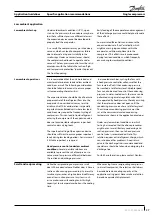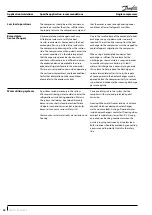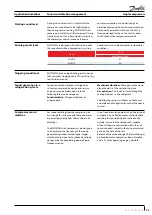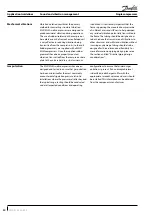
Oil management concept
Suction gas in a hermetic scroll compressor
flows via the oil sump, which makes it more
difficult to maintain equal pressure in the sumps
of parallel compressors. Since oil equalization
usually depends on equal sump pressures, this is
a point of special attention. Danfoss Commercial
Compressors have developed specially adapted
oil management systems which ensure proper
oil balancing between the compressors, but it is
always recommended to carry out some tests to
validate oil balancing in the system.
To ensure suitable oil distribution, both passive
and active types of systems are introduced into
MLZ/MLM116 compressors.
Active systems
An active system can offer more flexible
and efficient oil management. It is highly
recommended for manifolding since this
positive system increases the reliability of the
manifolding configuration. Oil management
will be secured mainly by the oil level regulator
and the oil separator, which can supply the
oil when required. The active system can thus
accommodate itself to various oil conditions.
Danfoss has qualified tandem/trio/quadro
composition for active systems.
Each compressor will equip the oil level regulator
to facilitate the oil level balance.
To avoid refrigerant back flow from high pressure,
it is always recommended to have a non-return
valve on the discharge line of each compressor,
and it is necessary to have one non-return valve
on the outlet of the oil separator in the system to
prevent refrigerant migration.
For more details on the oil separator/reservoir
and oil level regulator please refer to the “System
design recommendation” in this guideline.
High pressure
Low pressure
Non-return
valve
Suction
header
Non-return
valve
Non-return
valve
Non-return
valve
Combined oil
separator/reservoir
Oil filter
Non-return
valve
Compressor 1
Oil level regulator
Oil level regulator
Oil level regulator
Oil level regulator
Compressor 2
Compressor 3
Compressor 4
41
FRCC.PC.035.A4.02
Application Guidelines
Manifold compressors
















































